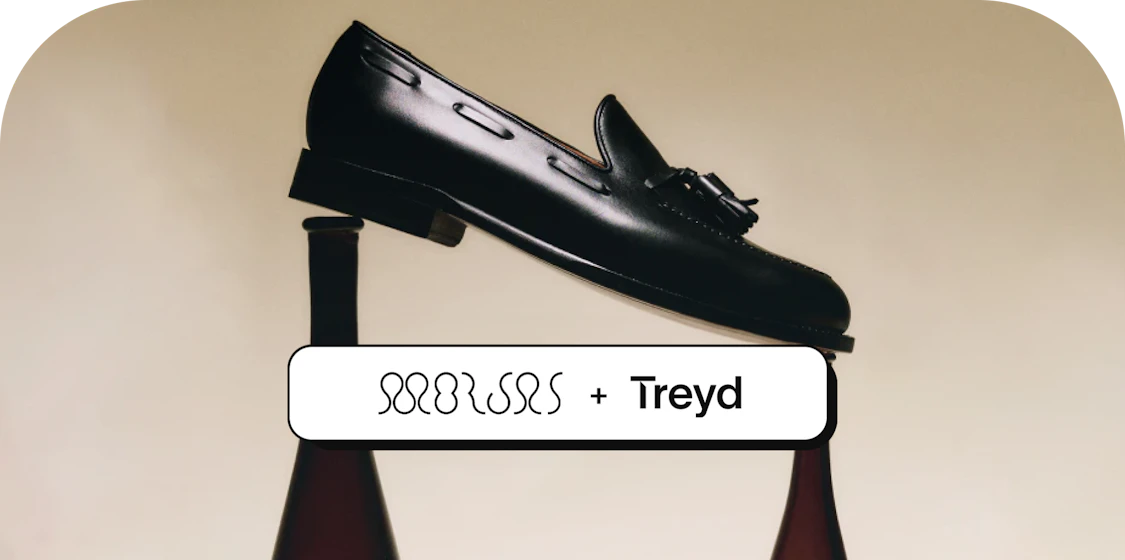MORJAS: improving the cash conversion cycle

“Treyd gives us greater control over our cash conversion cycle, which has been a key enabler for our growth.”
Swedish footwear brand MORJAS brings classic shoe craft into the modern age by providing timeless, quality design pieces through a first-class digital experience.
We interviewed MORJAS COO Daniel Ohlsson to learn more about the company, and how Treyd has aided them in their growth journey.

The background
MORJAS brings a blend of Spanish-Swedish heritage matched with timeless aesthetics. Henrik Berg, who grew up in Spain before moving to Sweden in his early teens, founded the company with a vision to blend the two cultures into a brand shaped by contrasts..
From classic penny loafers and chic espadrilles to versatile sneakers, and elegant boots and opera pumps, MORJAS offers a curated range of shoes and accessories. All this with a strong ecommerce focus and international approach from day one.
Most shoes in their range are made using the Goodyear welt technique which is considered the Rolls-Royce of shoe construction methods. This however comes with long lead times – goods can sometimes take up to 4 months to be produced.
As a result, inventory forecasting is challenging, and each purchasing decision requires a solid risk assessment to avoid over- or understocking. In addition, many suppliers require an advance payment of a share of the order value, which adds an additional cash flow restriction to the purchasing process.

The pain point of growing
As COO Daniel Ohlsson mentions, getting inventory and production levels to keep up with demand has been a challenge.
“Despite the more challenging macroeconomic environment, we have continued to see strong demand where many of our best-sellers have regularly been sold out. To keep up with our rapidly growing demand we need to constantly be forecasting and monitoring our inventory levels and push our suppliers to deliver what is most urgent to restock each and every week.”
But as is often the case when long production lead times and advance payments are involved, the cash conversion cycle (CCC) – meaning the time it takes for the business to turn inventory investments into cash – risks lagging behind.

“We would have been able to get by without Treyd – but they've really helped us free up valuable working capital and align our cash flows more to our seasonal patterns, which in turn has helped us continue to invest in our growth with ease.”
– Daniel Ohlsson, COO

Boosting cash conversion
The main benefit that Daniel points to when asked about the Treyd partnership is the control gained over MORJAS’ CCC. He adds that getting an additional 120 days to pay suppliers has been incredibly helpful – “having more time to sell the stock we’ve bought has been key to improving our operational cash flow and fuel our growth.”
“All our suppliers have different payment terms, MOQs and lead times. Treyd has helped us get more control over our cash flow and given us a tool to more or less guarantee a negative CCC in many cases” – meaning MORJAS can start making money from the inventory before paying for it.
“A good CCC is key if you have any growth ambitions. Even if you have great unit economics and overall profitability, you will struggle with cash flow if you have bad payment terms. Growing rapidly will then be way more challenging. Treyd has really helped us in that regard.”
Daniel also shared that, as a bonus, using Treyd to pay suppliers in advance has helped them negotiate discounts that had them winning from the exchange – "so it's definitely been very advantageous".
“We have used Treyd to negotiate discounts that exceed the Treyd fee, so we end up improving our gross margin without sacrificing cash flow.”
– Daniel Ohlsson, COO
Smart financing solutions for smart companies.
Whether it's financing invoices or inventory, we're happy to show how we can help.